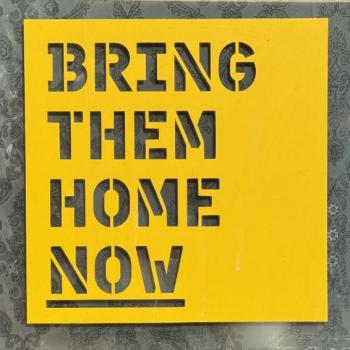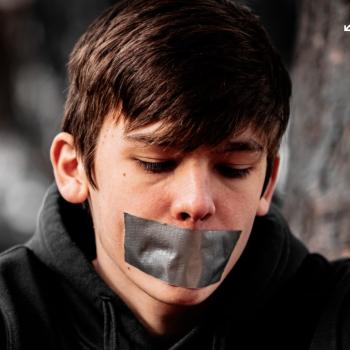White Christians: we need to embrace the truth about Jesus: he was one of them – a person of color.
During 2020, we have witnessed incredible injustice toward people of color: senseless deaths of men and women at the hands of police, admiration of a white young man with a rifle, disproportionate effects of the pandemic on communities of color.
We’ve engaged in victim-blaming when these groups have demanded their rights – for example, we criticized protesters for damaging property, but not the systemic racism that brought about the protests.
Many leaders, including Christian leaders, have pointed out the fact that such injustice (in one form or another) has been with us since the founding of America – even calling it our “original sin.”
(Many other Christian leaders have downplayed racism.)
Now that our racism has been on display for the whole world to see, it’s essential to keep the issue on the front burner, lest we become complacent with the slight improvement we might see under a new president.
This Christmas, we have fewer obligations and perhaps more time to reflect. As we look back on the trauma of 2020, let’s take a moment to contemplate Jesus in a different light. Let’s see if we can become better.
We’ve emphasized Jesus’ majesty
We acknowledge that Jesus was a baby, but we sing a lot about Jesus the King.
“Joy to the world, the Lord is come. Let earth receive its King.”
“The King of Kings salvation brings, let loving hearts enthrone Him.”
“Come and behold Him, born the King of Angels!”
“Hark! The herald angels sing: ‘Glory to the newborn King!'”
While it’s great to welcome a baby as our soon-to-be Savior, it’s sort of more American to welcome a champion – and to see him as “ours” (which makes us champions by association).
This year, in the relative quiet of a Covid Christmas, let us meditate on the lowliness, the other-ness of Jesus – and the implications for us today.

Jesus, actually
For starters, Jesus, that “holy infant, so tender and mild,” was probably not a blue-eyed, white baby.
This may not be the first time you’ve heard that, but let’s not rush past it this time.
Jesus was also part of a vulnerable population (a Palestinian and a Jew, living under Roman occupation), probably part of the vast peasant class.
Sit with the image for a moment. Baby Jesus was a a poor person of color (resist the temptation to say to yourself, “yes, but he was light brown”).
Picture this Jesus doing all the things – teaching, healing, walking, weeping. Dying. Rising.
Can we handle that?
If we can – if we can ask a non-white Jesus into our hearts, if we can worship a non-white Savior – then the next step should not be hard. We can see Jesus in black and brown people all around us.
Then, it might be easier for us to apply Jesus’ words:
I was hungry and you gave me something to eat,
I was thirsty and you gave me something to drink,
I was a stranger and you invited me in,
I needed clothes and you clothed me, I was sick and you looked after me,
I was in prison and you came to visit me…
Truly I tell you, whatever you did for one of the least of these brothers and sisters of mine, you did for me (Matthew 25:35-40).
Jesus desires for us to see himself in every needy person. Let’s just spend one minute imagining this.

If Jesus were at the side of the road, looking hungry and unwashed and holding a sign that said “homeless veteran,” would we drive by? Would we shake our heads and wonder why the government is letting that happen? Would we say “pull yourself up by your bootstraps”? Or would we care for him?
If Jesus were standing in a crowd – no, if a whole crowd of Jesuses were standing – and protesting low wages and police brutality, would we tell him/them, “pull yourself/selves up by your bootstraps”? Or would we protest too?
If he looked us in the eye and said, “my life matters,” would we glare back at him and say, “all lives matter”? Or would we say, “yes, your life matters to me.”
And if Jesus got angry enough about all the injustice to flip over some tables, would we tell him to calm down? Or would we figure out how we could help fix the system?
Of course, Jesus is the unwashed, homeless vet, the crowd in Minneapolis. Jesus is George Floyd and Breonna Taylor.
“Least of these”
Jesus didn’t ask us to feed the polite poor, or clothe the respectable naked. He didn’t command that we welcome those strangers who make us feel at ease, or care for the sick if it’s convenient.
He instructed us to see himself in all those in need.
And if we remember that Jesus himself was a marginalized person of color, maybe we can make the connection to the marginalized people of color around us. And love them.
(Please subscribe to my newsletter here, visit my archives here, and consider reading my popular posts on abortion starting here.)
FEATURED IMAGE: “baby Jesus” by bigoneep is licensed under CC BY-NC 2.0













